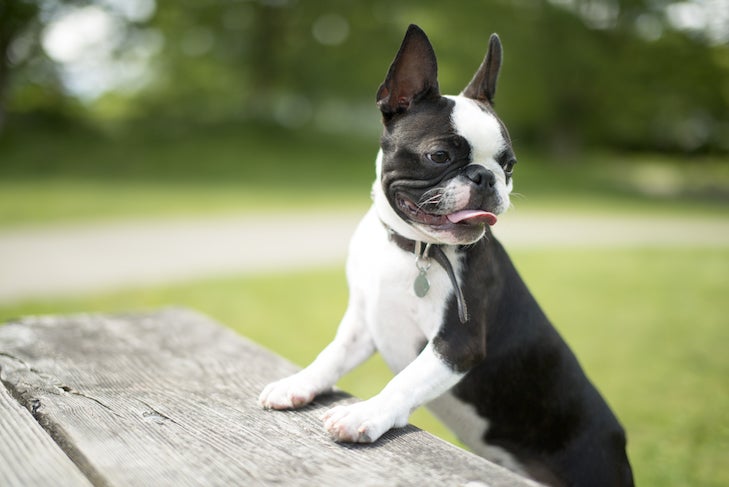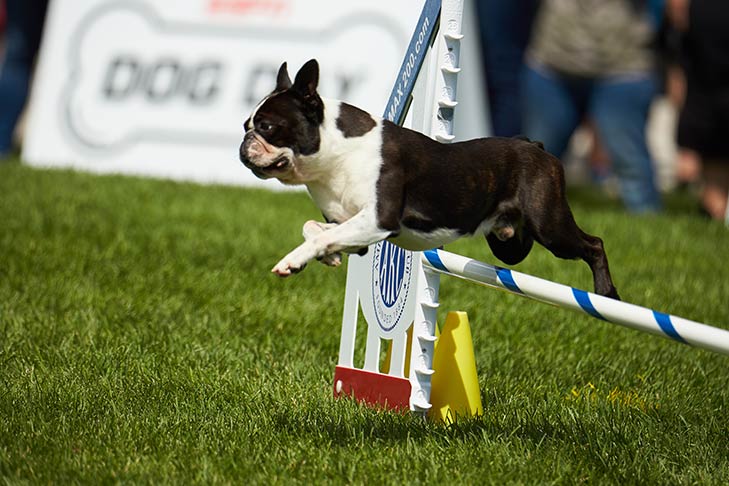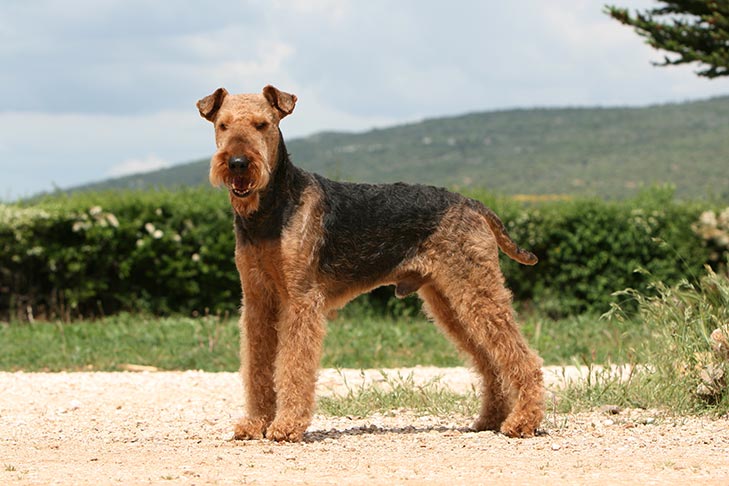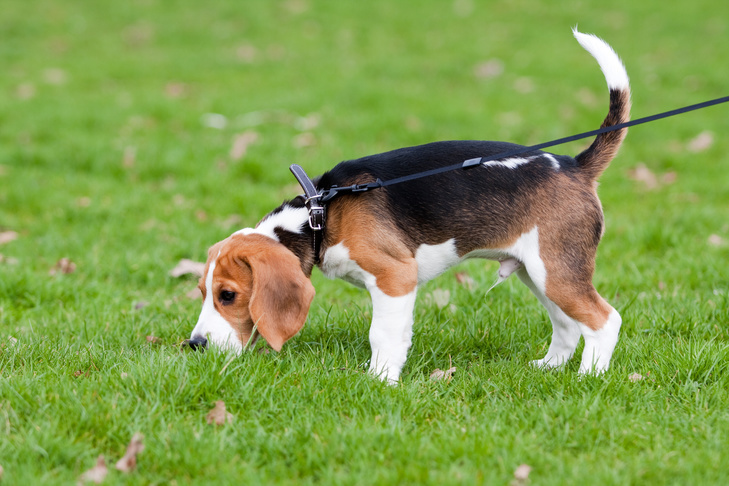
- collie
- boston terrier
- pekingese
- bull terrier
- english setter
- cocker spaniel
- dog breeds
- airedale terrier
- french bulldog
- beagle
- bulldog
- most popular breeds
The Boston Terrier, a top-ten breed for six decades of the 20th century, has reached the number-one position twice, including in the 1910s. The Airedale Terrier reached the number-two position, the highest the breed would ever claim, appearing in the top ten for three consecutive decades and then never regaining its national popularity.
The decade also marked the French Bulldog’s first jaunt into the top ten. Recognized by the AKC in 1906, the Pekingese makes its first appearance in the top ten and would remain on the list for six consecutive decades.
1. Boston Terrier

The Boston Terrier is a true American creation, bred as a cross between two different breeds. The new breed’s supporters established the Boston Terrier Club of America in 1891, changing the name of the breed from “Roundheads” or Bull Terriers to Boston Terriers, named after the city where the breed originated.
2. Airedale Terrier

The Airedale Terrier is thought to have originated in the valley of the Aire in England and descended from the now-extinct black-and-tan terrier. The first Airedales looked completely different from how they appear today, and they were known as Working, Waterside, and Bingley Terriers. The Airedale eventually became known as a dog that could do it all, being used as a wartime guard and messenger, as well as for rodent control and for hunting birds and game.
3. Collie

The precise origin of the Collie remains an enigma, but the two varieties, the rough-coated and the smooth-coated, existed long ago in the unwritten history of the herding dogs of Scotland and northern England. Prior to the past two centuries, both varieties were strictly working dogs without written pedigrees.
4. Beagle

The actual origin of the Beagle seems to be obscure because of the absence of reliable documentation on the earliest days of development. The turning point for American Beagles came in the 1860s when dogs from a well-bred strain in England were imported to inject a beautiful breed type.
5. Bulldog

The Bulldog, to the best of our knowledge, had its origin in the British Isles. The “bull” in its name referred to the dog’s use in the sport of bull baiting. The Cruelty to Animals Act of 1835 put an end to the sport, and subsequent generations of breeders have bred for the gentle temperament the Bulldog has today.
6. French Bulldog

There is a difference of opinion as to the origin of the French Bulldog, but one ancestor must have been the English Bulldog – probably one of the toy variety, of which there was a great number in England around 1860. These toy Bulldogs were sent in large numbers to France, where they were crossed with various other breeds. Eventually, they produced the French Bulldog which so many know and love today.
7. English Setter

The best authorities trace the origin of the English Setter to their appearance as a trained bird dog in England more than 400 years ago. Evidence points to the breed’s origin as crosses of the Spanish Pointer, large Water Spaniel, and the Springer Spaniel. These breeds combined to produce a superb bird dog with a high degree of proficiency in finding and pointing game in open country.
8. Cocker Spaniel

The spaniel family is a large one of considerable antiquity. As far back as the 14th century, we have mention of the Spanyell, which came to be divided into water and land spaniels. Further divisions in land spaniels were based on size. Cocker Spaniels were the smaller of the two types of spaniels and are to this day the smallest in the Sporting Group.
9. Pekingese

The earliest known record of the Pekingese, also known as the “Lion Dog,” is traced to the Tang Dynasty in China in the 6th century. Breeding of these little dogs reached a zenith during the Tao Kuang period (1821-1851). The oldest strains of the breed were kept amazingly pure. Imperial Dog Books, illustrated with pictures of the most admired dogs, were used as the standards.
10. Bull Terrier

The Bull Terrier, crossed between Bulldogs and various terriers, gained popularity in the early 1800s among the sporting fraternity. These crosses combined the determination and courage of the Bulldog with the natural agility and intensity of the terrier. They ranged in size and color. Some show more Bulldog heritage, while others are more terrier-like.

